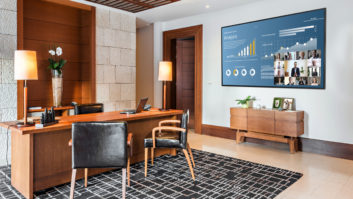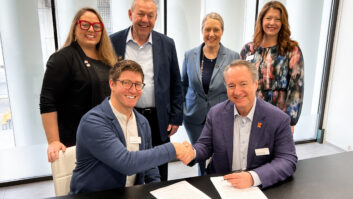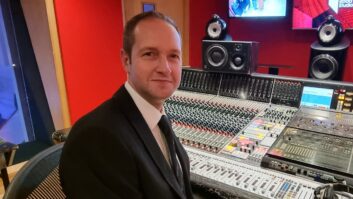The miracle of good entertainment is that it appears to be effortless, even when every single detail on screen or in a song has been painstakingly labored over before the general public experiences it.
Hiding the technical aspects of a production is one of the founding principles of entertainment, a precept which allows the audience to leave the real world behind for a blissful, relaxing period of time. Relaxation is the cornerstone of any residential system design, but it was especially key in this year’s CEDIA Electronic Lifestyles Best Hidden Installation. Earlier this year, Electronics Design Group (www.edgusa.com) was given the task of integrating entertainment into a sunroom addition on a historic home in New Jersey. At center stage in the project was a directive to keep all electronics hidden, so the clients could enjoy the room with or without a media component.
“The intent of this room was not for it to be the central media room of the house,” explained EDG president Bob Gullo. “It was designed to be a very relaxing room, and TV was not meant to be the focal point. All of the serious screening in the house happens in the theater in the basement.”
The elaborate basement screening room was another EDG project, completed at the same time as the sun room addition. The latter was a separate endeavor because it was initiated on a consultant basis. Following a six-month design process with the client’s architect and related tradespeople, EDG also obtained the installation contract.
As a consultant on the project, EDG was hired to provide guidance on acoustical considerations, mechanical systems related to the media system, and also millwork design to house all the A/V components. First and foremost in all of these design aspects was the client’s wish to hide the plasma monitor beneath the floor. This would entail the installation of a mechanical lift which would elevate the plasma to viewing height while in use, and then return the display to the space below the floor when the system was not in operation.
The six-month consulting period proved beneficial on this design-intensive project, as significant architectural adjustments had to be made to accommodate a rapidly evolving system design. “Initially we were talking with the client about a 42-inch panel, which would have required less depth, then we went to a 50-inch panel, and then of course we incorporated the center channel into it, so a lot of things came up,” Gullo recalled. “It not only required more depth, it also required a double-lift system.”
During the design phase, EDG was able to convince the architect to expand what was originally a crawl space beneath the floor to a depth of four feet to accommodate the 50-inch Pioneer Pro-1000 screen, the double lift required to move it, and a center-channel Triad loudspeaker built into the millwork surrounding the screen. “The good news is that we were able to get involved early enough in the project so it didn’t cause a major catastrophe,” Gullo said. “Had we got involved any later, where the plans went out to bid and they started to dig, it would have been a very serious problem.”
EDG advocates close collaboration with architects and designers for the best possible end result. “The foundation of our business is very tight collaboration with other trades, particularly the architectural community,” Gullo said. “We look to be an informative resource to them, and that’s really a major foundation of what we do.”
To mobilize the plasma, EDG worked with Electrokinetics, which built a double rack-and-pinion lift to support the height and weight of the display and center-channel speaker. The millwork was also planned out during the design phase. EDG brought ient on the exterior appearance of the millwork, we worked in conjunction with her on all the interior requirements, and then we had a complete CAD package that went out to our millworkers for pricing,” Gullo said.
Custom millwork also conceals a Middle Atlantic AXS rack in the rear corner of the room, containing a Sony HDTV DirecTV receiver, a DVD player, a VCR and an audio receiver. An off-air HDTV option is also available.
Because of the addition of a master bedroom over the sun room, acoustic isolation of the room was important. To make sure things were quiet upstairs, EDG brought in Steve Haas from SH Acoustics to assist on the consultation. This prevents any residents upstairs from hearing the 5.1 setup downstairs, which consists of Triad In-Wall Bronze speakers. In addition to the center channel in the base of the plasma lift, left and right channels flank the fireplace. The rear channels are in the wall behind the couch, along with the subwoofer that is also recessed there.
Control is provided by an AMX Axcent 3 Integrated Axcess Controller and a Viewpoint color RF touchpanel which is integrated with Lutron lighting control and motorized drapery behind the seating.
In a room where the phrase “seamless integration” took on new meaning, EDG demonstrated behind-the-scenes talent worthy of Hollywood. This wasn’t the first time, either. EDG won the Best Hidden Installation Award in 2001, and in the past two years has taken home a number of awards, including Best Home Theater. “We pride ourselves on being able to come up with very unique solutions for our clients,” Gullo said. “We listen carefully, we understand their needs, and we really try to come up with solutions that work.”
-Kirsten Nelson is editor of Systems Contractor News.







